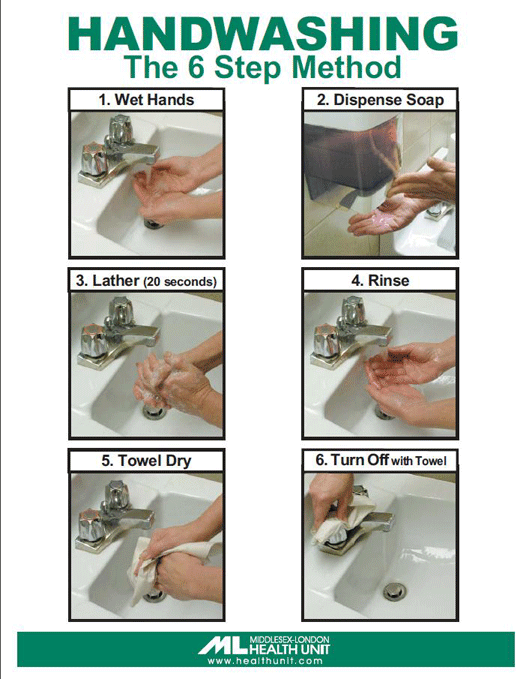For More Information
Please contact your healthcare provider, local pharamacy or walk-in clinic.
What is Hand, Foot and Mouth Disease (HFMD)? HFMD is an illness caused by a virus. It should not be confused with Foot and Mouth disease, which is seen in pigs, sheep and cattle. These two illnesses come from different viruses. Hand, Foot and Mouth Disease is not a serious disease and complications are rare.
Please contact your healthcare provider, local pharamacy or walk-in clinic.
Symptoms of Hand, Foot and Mouth Disease may include fever, poor appetite, vomiting and/or diarrhea, feeling tired, headache and sore throat followed by small, painful sores in the mouth. These sores can be found on the sides of the tongue, gums and the inside of the cheeks. A rash of red spots with blisters will then develop on the palms of the hands, the bottom of the feet and sometimes on the buttocks. The illness usually lasts for seven to ten days.
It takes three to six days from the time the virus gets into the body before symptoms start to show. Some people who have the virus in them may not show any symptoms at all.
Hand, Foot and Mouth Disease is common in infants and children under 10 years of age. It is often spread among children in childcare settings but adults may also be at risk. Infections occur more often when hygiene is poor and during summer and early fall.
Hand, Foot and Mouth Disease spreads from person to person through contact with someone’s nose and throat secretions, saliva, fluid from the blisters or stool. An infected person is most contagious during the first week of illness. The viruses that cause Hand, Foot and Mouth Disease may be on surfaces for long periods of time. It is possible to become sick with Hand, Foot and Mouth Disease from contact with soiled objects.
A person can shed the virus from their respiratory tract for about a week and in their stool for several weeks. Some people excreting the virus, including most adults, have no symptoms at all.
There is no treatment for Hand, Foot and Mouth Disease. Doctors may recommend an over-the-counter drug such as acetaminophen (Tylenol) for fever or pain.
You can lower the chance of getting sick with Hand, Foot and Mouth Disease by doing the following:
 The 6 Step Method of Handwashing (PDF 96KB)
The 6 Step Method of Handwashing (PDF 96KB)Clean and sanitize washroom surfaces and all hand contact surfaces at least daily.
Keeping sick children at home can lower the chance of spreading the illness to other children at school, day care or playgroups. Children who feel well enough to go to school, day care etc. can return even if they still have the rash.